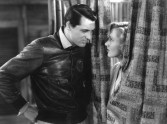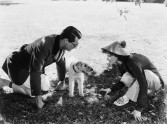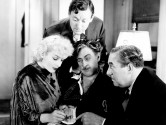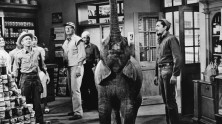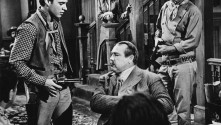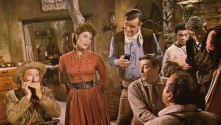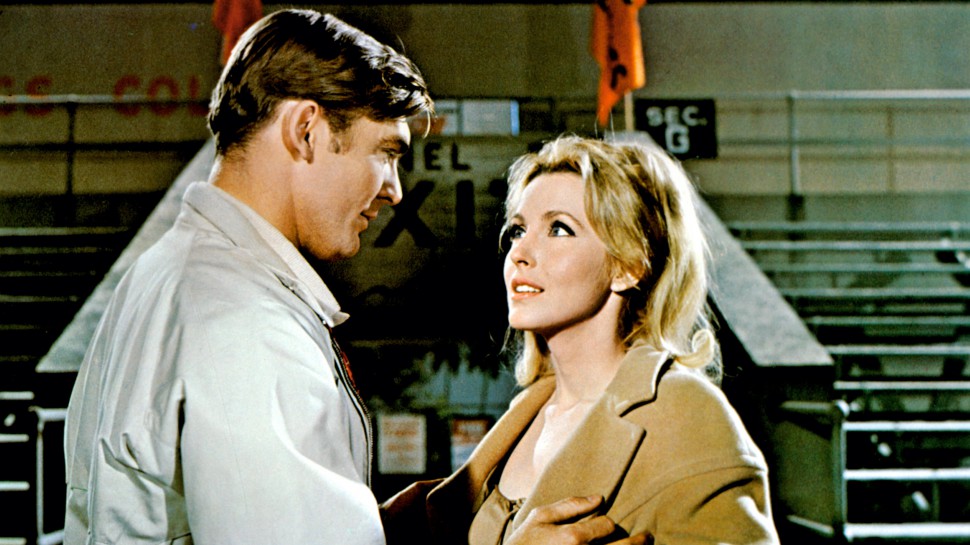
Red Line 7000 finds Hawks returning to the stock-car racing milieu of his earlier The Crowd Roars with a larger cast and an even more dizzying sense of peril. Making spectacular use of several famous North Carolina NASCAR tracks (Daytona, Charlotte and Darlington Speedways), the film spends much of its nearly two-hour runtime on lengthy race sequences that alternate among the drivers, the crowd, the announcers and the pit crews, with Hawks’ eclectic visual style encompassing everything from whiplash-inducing zooms, immersive driver-POV shots, clarifying overhead scans of the track, and droll stationary coverage of the spectators. Away from the circuit, the film surveys the various friendships, romances and rivalries that develop among a group of drivers and the women who remain stuck in their orbit. Among them are James Caan’s taciturn tough guy Mike, the spunky French beauty who catches his eye (Marianna Hill), the handsome good boy (Skip Ward) who threatens his ego, and a woman (Gail Hire) convinced she’s cursed after losing two loved ones to disastrous crashes. Hawks stages these interpersonal dramas in a series of almost Pop settings (featuring notably early examples of product placement), from a modernist Holiday Inn painted in bubble-gum pink to a chintzy restaurant-bar outfitted in red leather and checkered tablecloths, and fills them with amusing detours like a pastiche of To Have and Have Not’s celebrated nightclub ballad scene—none of which fully offset the enveloping futility and tragedy in the lives of these characters.
Part of film series
Screenings from this program
Gentlemen Prefer Blondes

His Girl Friday

The Big Sleep (pre-release version)

A Girl in Every Port

The Cradle Snatchers / Paid to Love

Fazil

Fig Leaves

Man's Favorite Sport?

The Crowd Roars

Today We Live


